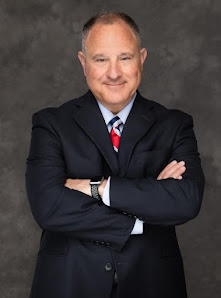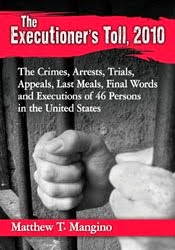Friday, July 26, 2024
Creators: Susan Smith, Infamous Killer of Her Children, Is Where She Belongs
Creators Syndicate
July 23, 2024
In the summer of 1994, O.J. Simpson engaged in his infamous
low-speed chase with a parade of Los Angeles squad cars loaded with police
officers who wanted to take him into custody for the alleged murder of his wife
Nicole Brown Simpson and Ron Goldman. Three months later, on the other side of
the country, Susan Smith put her children in a vehicle, strapped them into
their car seats and started them on a slow roll to the bottom of John D. Long
Lake.
Although Smith's case started after and ended before O.J.'s
case, it certainly didn't live in the shadow of the so-called trial of the
century. When Smith let her car roll into a lake in Union County, South
Carolina, she kicked off a media frenzy that has served as a harbinger of
things to come. A throng of media descended on Union County and didn't leave
until Smith was shipped down state to prison.
Smith was 22 years old when she told investigators that a
Black man had carjacked her while the two boys were still inside the car. The
man let her out and sped off with her children. The man who prosecuted Smith,
Tommy Pope, is now a member of the South Carolina legislature. He recently told
Angenette Levy of the Law and Crime Network that Smith's first assertion that
"a Black man carjacked the vehicle with her sons inside" stirred
international interest in the case.
She wept on national television, pleading for the children's
safe return. "Your mama loves you so much," she said during one news
conference, according to Fox News.
Smith was convicted of murdering her children. She has been
behind bars for nearly three decades and now has a parole hearing scheduled for
Nov. 4.
Her adjustment in prison has been anything but stellar.
According to ABC News, Capt. Alfred R. Rowe Jr., a supervisor at the Women's
Correctional Institution, was terminated and charged with having sex with Smith
while she was incarcerated. A second guard, Lt. Houston Cagle, admitted to also
having sex with Smith.
More recently, Smith has been hard at work courting her
admirers — according to recorded phone calls from Leath Correctional
Institution reviewed by the New York Post, Smith carried on romantic and sexual
conversations with at least 12 men over the past three years.
"It's time for me to get out," Smith told one of
her admirers over the phone earlier this year. "I've done my time. I'm
ready to go."
How will her conduct impact her chances at parole?
Some state parole decision-makers use various assessments
including risk, sex offending, mental health and drug and alcohol. Risk
assessment tools coupled with parole criteria are thought to provide uniformity
to a board's decision-making process.
The South Carolina Department of Probation, Parole and
Pardon Services has a list of criteria it considers when an individual is
eligible for parole. Although the board has absolute discretion with regard to
parole, there are 16 factors that the board may consider.
Three of those factors weigh heavily against Smith's parole.
First, the seriousness of the offense. It is difficult to think of a more
callous act than drowning your children. Second, the inmates conduct while in
prison. Sex with guards and phone sex with potential financial supporters is
not a good look for someone who wants the board's mercy. Finally, a fact that
will play a significant role in the board's decision is the position of the
judge, prosecutor and victim's family with regard to parole. Pope, Smith's
prosecutor, has already said that he believes in truth in sentencing, "life
should mean life."
Parole in South Carolina is a privilege, not a right. Smith
may be ready to go, but she is likely to remain behind bars for the foreseeable
future.
Matthew T. Mangino is of counsel with Luxenberg, Garbett,
Kelly & George P.C. His book "The Executioner's Toll, 2010" was
released by McFarland Publishing. You can reach him at www.mattmangino.com and
follow him on Twitter @MatthewTMangino.
To visit Creators CLICK HERE
Thursday, July 25, 2024
The Supreme Court is on the ballot this fall
America is facing an assault on our democracy, carried out by the Court’s supermajority, led by Chief Justice John Roberts, and lower court judges, reported the Washington Monthly. Democrats must respond to this attack, no matter their nominee, even if the Court is out of the headlines with its term concluded earlier this month. We’re glad to see reports that President Biden will soon propose term limits and a binding ethics code for Supreme Court justices.
It’s time. In February 2017, shortly after Trump took
office, The Washington Post, which first reported the Biden-Harris looming
reforms, adopted its slogan: “Democracy
dies in darkness.” But democracy can die in broad daylight.
Witness Federal
District Court Judge Aileen Cannon casting aside long-standing precedents this
week to rule that the appointment of Special Counsel Jack Smith is
unconstitutional in the Mar-a-Lago documents case over which she’s presiding in
Florida. Then there’s the Supreme
Court’s stunning decision this month finding the president virtually immune
from prosecution. The opinion, authored by Roberts, may scuttle the
remaining federal and state cases against Trump, even if Trump loses the
election. In New York State, where Trump was convicted on 34 felony counts
related to his hush money and election interference scheme, sentencing has been
delayed because of the Court’s ruling and may never be carried out.
It’s a familiar but still trenchant observation: There is
nothing “conservative” about the Court’s supermajority. It is radical and
untethered by conservative respect for precedent or the historic prerogatives
of branches besides the executive.
While the Court issued questionable decisions when Chief
Justices Warren Burger and William Rehnquist led it—Bush
v. Gore—it never strayed so far from respecting constitutional consensus as
it has under Roberts,
despite his posture as an institutionalist only interested in “calling balls
and strikes.”
Things changed in 2005 when President George W. Bush
nominated, and the Senate confirmed Roberts and Samuel Alito to the Court. It
created a 5-4 precedent-smashing majority that discovered a Second Amendment
right to private ownership of guns (District
of Columbia v. Heller, 2008), equated money and speech in extremis (Citizens
United v. Federal Election Commission, 2010), and invalidated the
pre-clearance requirements of the Voting Rights Act which Congress had almost
unanimously extended. (Shelby
County v. Holder, 2013) Thanks to Senate Republican Leader Mitch
McConnell’s manipulation of the confirmation process to confirm Trump’s three
nominees—Neil Gorsuch, Brett Kavanaugh, and Amy Coney Barrett—the 5-4 Court
wielding a sledgehammer became the 6-3 radical court swinging a wrecking ball.
Although the Trumpified Court’s abortion and presidential
immunity decisions received the most attention, equally radical are its
evisceration of the ability of states and localities to regulate guns,
elimination of affirmative action in university admissions, and reversal of the
40-year precedent requiring deference to administrative agencies when statutes
are ambiguous. So, too, were its decisions breaching the wall between church
and state where even the flimsiest claim of religious liberty sent the justices
running to grant a license to discriminate.
“The least dangerous branch,”—Alexander Hamilton’s famous
description of the courts—has become the most dangerous, even without the sword
or purse.
Trump and McConnell gave us this Supreme Court supermajority
to change our country in ways that would be difficult to undo. Taking a victory
lap when Barrett was confirmed days before the 2020 presidential election,
McConnell boasted: “A
lot of what we have done over the last four years will be undone sooner or
later by the next election. They won’t be able to do much about this for a
long time.”
He’s right. The Constitutional five-alarm fire lit by the
Supreme Court supermajority illuminates the only way to respond to this attack
on democracy. Whoever the Democrats nominate in Chicago must fiercely
counterattack the Supreme Court, putting it front and center in their
presidential campaign. They must detail the damage done and offer a clear
response. The voters must know that if they elect a Democratic president and a
Democratic Congress—very big “if”s, to be sure—the chief executive will fight
to enlarge the Supreme Court from nine to 13 members, impose term limits on the
justices, and pass a binding ethics code.
The case for these changes has been compelling for many
years. Of the advanced democracies, America has the smallest number of jurists
on its high court. We
also have the only high court whose members are not constrained by age or term
limits. Their replacement is a matter of the vicissitudes of death and
resignation rather than any predictable timetable, leaving some one-term
presidents like Trump with three nominations and others, like Jimmy Carter,
with none.
Ignoring this antiquated and arbitrary system was possible
when the Court commanded widespread respect. That is no longer the case, and
“we the people” need not stand by while six justices remake our country, some
while enriching themselves. When the Civil
Rights Act neared passage in the summer of 1964, a very different
Senate Republican leader, Everett
Dirksen, who backed Lyndon Johnson’s historic legislation, quoted the French
novelist Victor Hugo: “Nothing is more powerful than an idea whose time has
come.” The next Democratic president needs to act on that truth.
To read more CLICK HERE
Wednesday, July 24, 2024
Law & Crime: These cases will go away faster than you can say ‘President Trump’: For Trump’s legal team, it’s all about delay
Special for Law and Crime News
July 8, 2024
The U.S. Supreme Court decision on presidential immunity is already having an impact on the pending criminal cases
against Donald Trump. The former president’s lawyers are trying to apply the
ruling in Trump v. United States to the Mar-a-Lago classified documents case.
In a 10-page motion, lawyers have asked U.S. District Judge Aileen M.
Cannon to allow them to file additional briefings on immunity and to freeze
nearly all pretrial activity until she resolves the issue.
“Resolution of these threshold questions is necessary to
minimize the adverse consequences to the institution of the presidency arising
from this unconstitutional investigation and prosecution,” Trump’s lawyers
wrote in the July 5 filing.
The second look proposed by Trump’s legal team was made
possible by the Supreme Court’s recent ruling. The high court found “at
least a presumptive immunity from criminal prosecution for a President’s acts
within the outer perimeter of his official responsibility.” The Court ruled that the former president has absolute immunity
with regard to his discussions with the Department of Justice about leveraging
power to have states replace their legitimate electors and investigating sham
allegations of election fraud.
The court found that the president is presumptively immune
for allegedly “attempt[ing] to pressure the Vice President to take particular
acts in connection with his role at the certification proceeding.”
What’s more, the majority of the justices found that Trump’s
communication by tweet and public address on Jan. 6 may be protected.
“The president possesses ‘extraordinary power to speak to
his fellow citizens and on their behalf,” the decision said. “[T]he
President’s] communications are likely to fall comfortably with the outer
perimeter of his official responsibilities.”
Trump’s lawyers will likely seek to toss all of the federal
charges for subversion of the 2020 election. The Supreme Court has remanded the
case to U.S. District Judge Tanya Chutkan to determine which allegations
in Smith’s indictment would be barred under the decision,
and the justices said that additional briefing will be needed for the trial
court to do so.
The portion of Smith’s prosecution dealing with scheming
with the Department of Justice to pressure Georgia to investigate the election is dead in the
water. Trump’s team will use the court’s opinion to fight evidence in the case
still standing after Chutkan completes her analysis — like meetings Trump had
with his top advisers and Vice President Mike Pence.
Some portion of the fake electors case might survive the
court’s scrutiny and also the classified documents case which occurred after
Trump left the White House.
Smith’s prosecutions have taken a blow, but it’s certainly
not a knockout. However, Trump’s strategy from the beginning in dealing with
the various criminal charges was delay. To that end he has been successful.
Smith’s prosecutions will not be tried before Election Day, and if Trump
ultimately wins in November these cases will go away faster than you can say
“President Trump.”
Matthew T. Mangino is of counsel with Luxenberg, Garbett,
Kelly & George P.C. and the former District Attorney of Lawrence County,
Pennsylvania, His book “The Executioner’s Toll, 2010” was released by McFarland
Publishing. You can reach him at www.mattmangino.com and
follow him on Twitter @MatthewTMangino
To read more CLICK HERE
Tuesday, July 23, 2024
Former GOP AG concerned about 'abuse of power'
As the onetime White House counsel and attorney general under President George W. Bush, Alberto Gonzales was known as an energetic and sometimes controversial supporter of expansive presidential powers, particularly in the realm of national security. He’s also no fan of Donald Trump, reported POLITICO.
So what would he make of the Supreme Court’s recent ruling granting broad immunity
to the president, including significant protection to Trump from prosecution in
the Justice Department’s case alleging that he tried to steal the 2020
election?
In an interview with POLITICO Magazine conducted over
the phone, and in an email follow-up after the assassination attempt on Trump,
Gonzales largely sought to square the circle: Even as he suggested the Supreme
Court’s ruling largely affirmed the need for a president to make tough
decisions, he expressed dismay about how Trump might use the authority for
malign purposes if he returns to the White House.
“Why would anyone think, given his record, that he
would not abuse the power of the office?” Gonzales said. “I think everyone
should have concerns about possible abuse if he becomes president of the United
States again.”
To read more CLICK HERE
Sunday, July 21, 2024
Saturday, July 20, 2024
Oklahoma executes man for raping and killing his 7-year-old former stepdaughter
The 9th Execution of 2024
Oklahoma executed Richard Rojem on June 27, 2024. He was convicted of
kidnapping, raping and killing his 7-year-old former stepdaughter in 1984.
Rojem, 66, received a three-drug lethal injection at
the Oklahoma State Penitentiary in McAlester and was declared dead at 10:16
a.m., prison officials said. Rojem, who had been in prison since 1985, was the
longest-serving inmate on Oklahoma’s death row.
When asked if he had any last words, Rojem, who was strapped
to a gurney and had an IV in his tattooed left arm, said: “I don’t. I’ve said
my goodbyes.”
He looked briefly toward several witnesses who were inside a
room next to the death chamber before the first drug, the sedative midazolam,
began to flow. He was declared unconscious about 5 minutes later, at 10:08
a.m., and stopped breathing at about 10:10 a.m.
A spiritual adviser was in the death chamber with Rojem
during the execution.
Rojem had denied responsibility for killing his former
stepdaughter, Layla Cummings. The child’s mutilated and partially clothed body
was discovered in a field in rural Washita County near the town of Burns Flat
on July 7, 1984. She had been stabbed to death.
Rojem was previously convicted of raping two teenage girls
in Michigan, and prosecutors said he was angry at Layla Cummings because she
reported that Rojem sexually abused her, leading to his divorce from the girl’s
mother and his return to prison for violating his parole.
Rojem’s attorneys argued at a clemency
hearing this month that DNA evidence taken from the girl’s fingernails
did not link him to the crime.
“If my client’s DNA is not present, he should not be
convicted,” attorney Jack Fisher said.
In a statement read by Attorney General Gentner Drummond
after the execution, Layla’s mother, Mindy Lynn Cummings, said: “We remember,
honor and hold her forever in our hearts as the sweet and precious 7-year-old
she was.
“Today marks the final chapter of justice determined by
three separate juries for Richard Rojem’s heinous acts nearly 40 years ago when
he stole her away like the monster he was.”
Rojem, who testified at the hearing via a video link from
prison, said he wasn’t responsible for the girl’s death. The panel voted 5-0
not to recommend to the governor that Rojem’s life be spared.
“I wasn’t a good human being for the first part of my life,
and I don’t deny that,” said Rojem, handcuffed and wearing a red prison
uniform. “But I went to prison. I learned my lesson and I left all that
behind.”
Prosecutors said there was plenty of evidence to convict
Rojem, including a fingerprint that was discovered outside the girl’s apartment
on a cup from a bar Rojem left just before the girl was kidnapped. A condom
wrapper found near the girl’s body also was linked to a used condom found in
Rojem’s bedroom, prosecutors said.
A Washita County jury convicted Rojem in 1985 after just 45
minutes of deliberations. His previous death sentences were twice overturned by
appellate courts because of trial errors. A Custer County jury ultimately
handed him his third death sentence in 2007.
Oklahoma, which has executed more inmates per capita than any other state in the
nation since the death penalty was reinstated in 1976, has now carried out 13
executions since resuming
lethal injections in October 2021 following a nearly six-year hiatus
resulting from problems
with executions in 2014 and 2015.
To read more CLICK HERE









